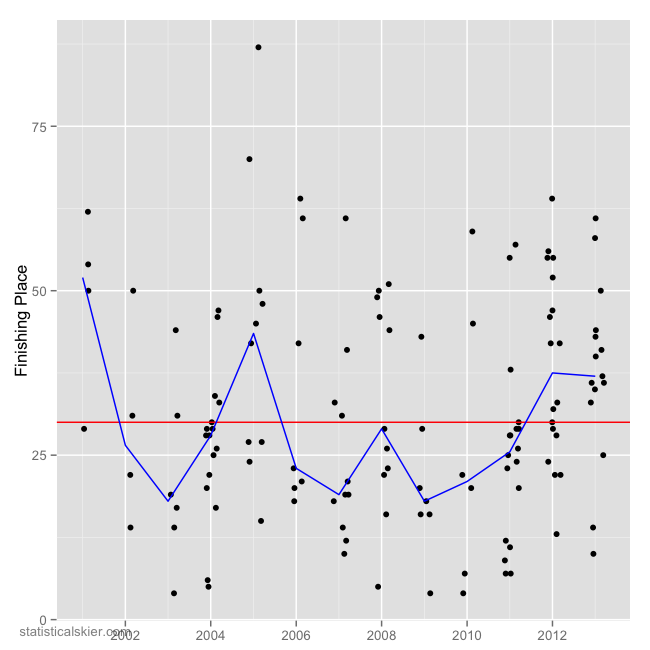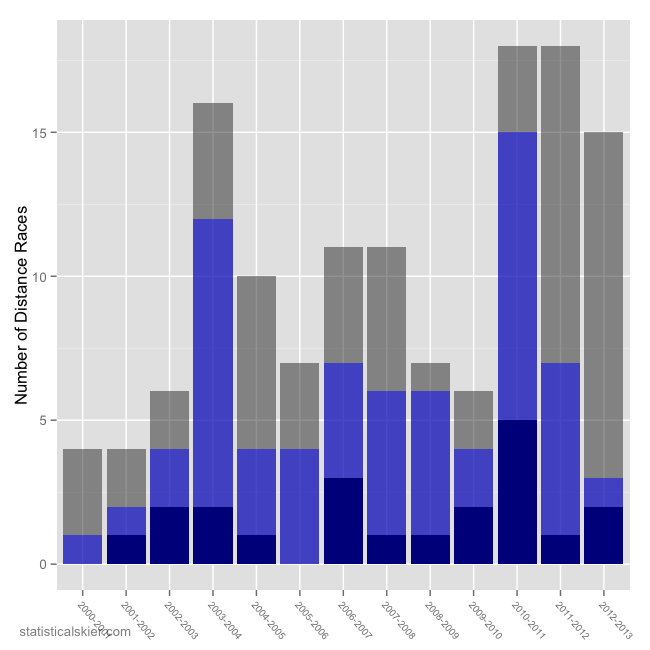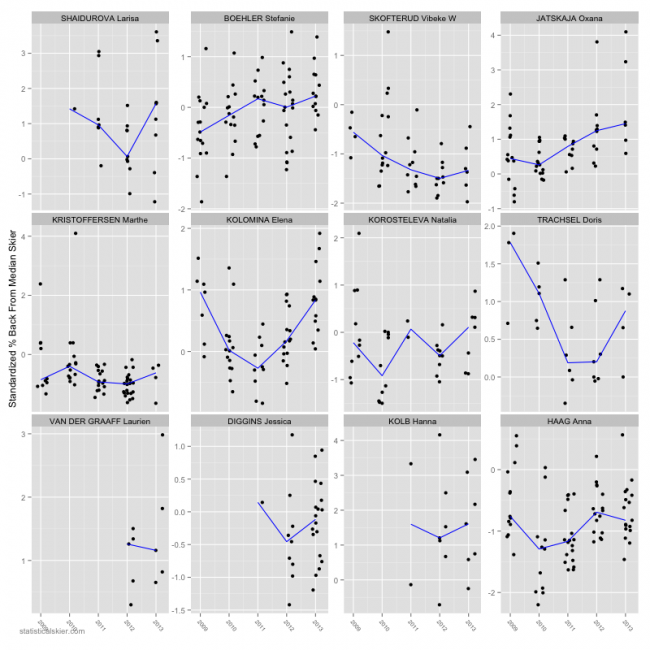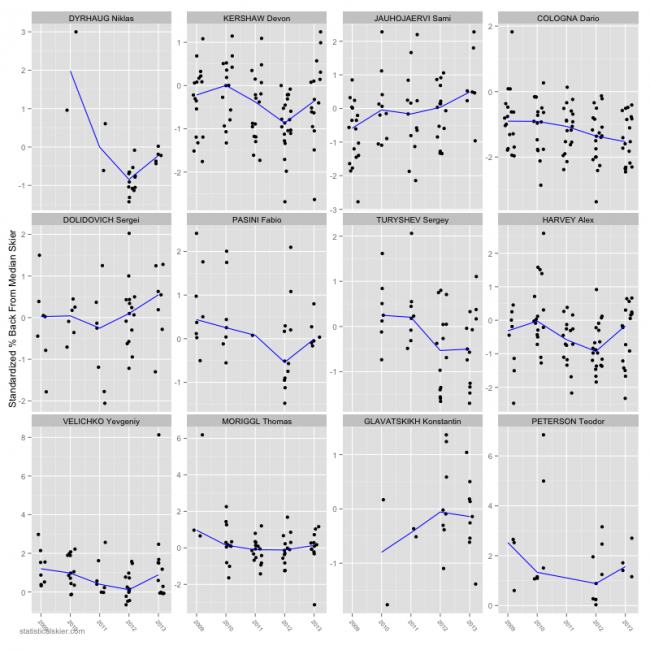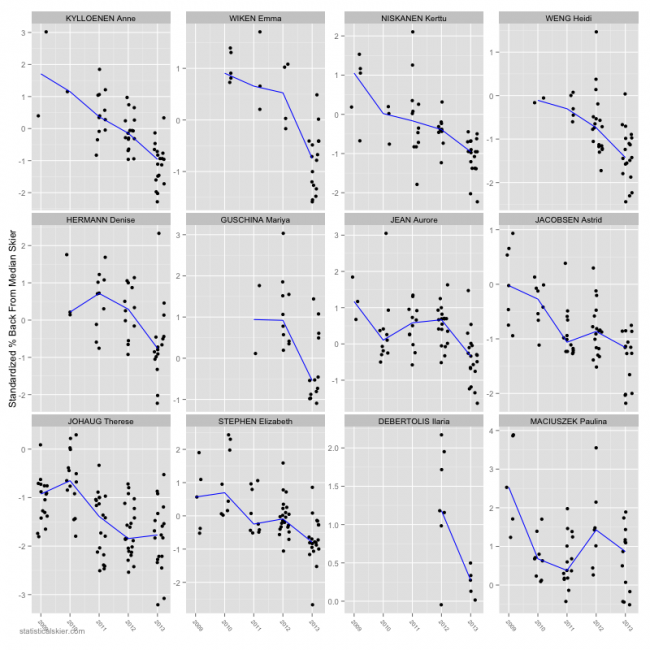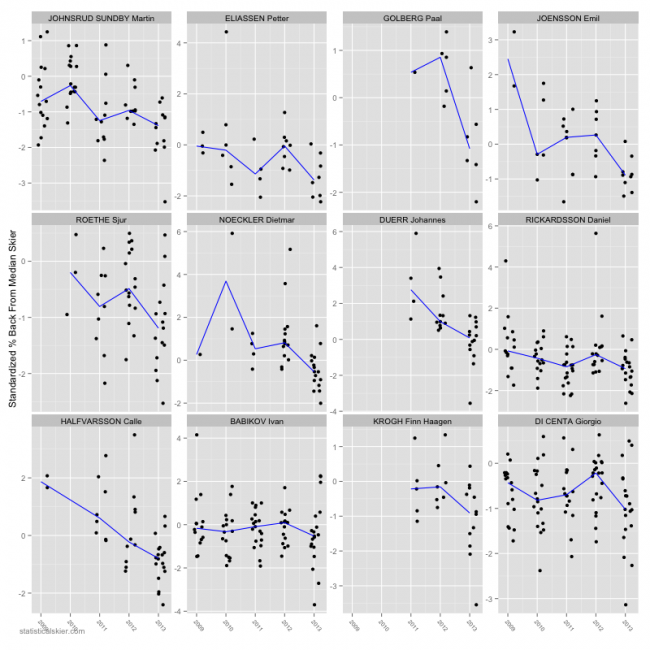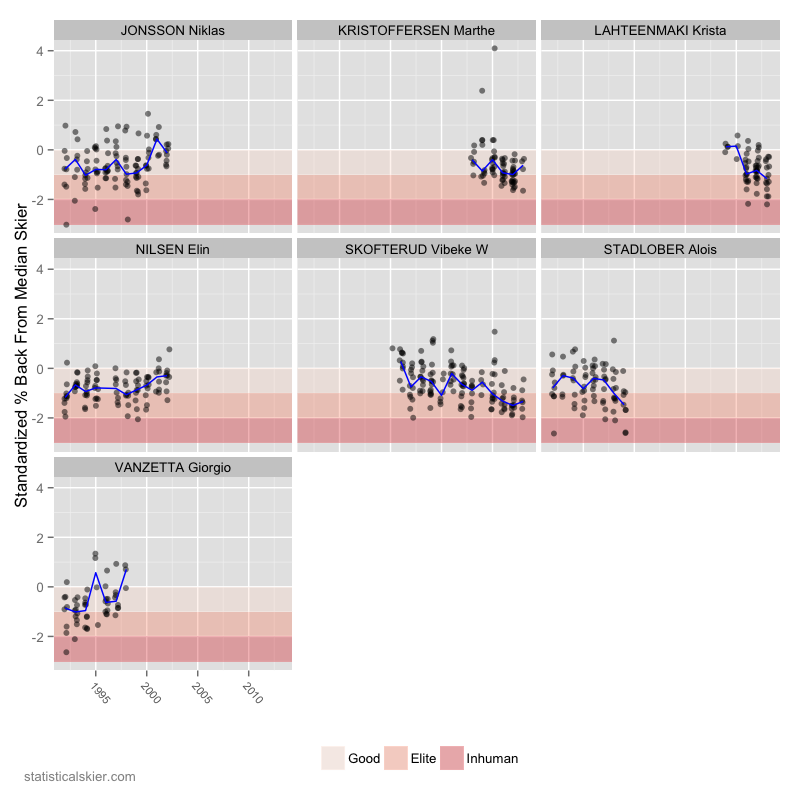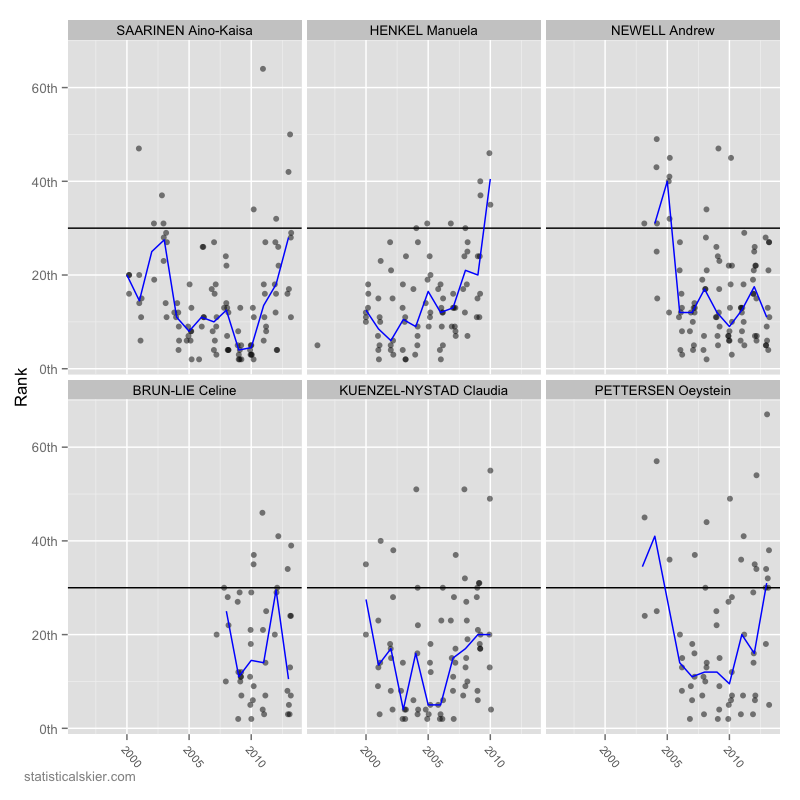Kris Freeman Off The US Ski Team
The USST has just officially announced the team for next season, although we already knew quite a bit based on what several of the athletes have been saying.
Probably the biggest news is that Kris Freeman is no longer on the team at all. Not bumped down to the B-Team. Removed entirely, although apparently also being told that he will “almost certainly” still be named to the Olympic squad next year in Sochi.
Heading into this spring, I was actually expecting Freeman’s status on the team to change. He had fallen out of the red group on the World Cup, and generally he’s had two rough seasons in a row now. Let’s look more closely using the simple metric of finishing place, which is generally what’s going to matter to the USST in general:
These are Freeman’s distance results in WC/WSC/OWG races, with his median result by season in blue. Thirtieth place is indicated in red for reference. As we all know, Freeman has always been erratic, which isn’t surprising considering the medical issues he’s had to deal with. From 2006 to 2011 his median, or “typical” result could pretty easily be counted on to be in the points (although not always by much). And he’d typically have one, or maybe two, races each season where he’d get within spitting distance of the podium.
While the 2010-2011 campaign doesn’t include some of his very best races, you could make an argument that with 5 races in the top 15 it was his most consistently strong season.
But the last two seasons have seen a fairly dramatic slide, to the point where Freeman has been considerably more likely to be outside the points. For another look at this same data consider this:
The bars represent each distance race for Freeman, with the light blue indicating top 30 results and the dark blue representing top 15 results. From this perspective, his 2003-2004 and 2010-2011 seasons start to look somewhat like outliers. I was particularly interested in Freeman’s comments about how he believes that part of his problem this year was that he raced too much, and plans on cutting back next year. I wouldn’t have guessed that that would be the big issue, looking at this graph, particularly the last three seasons. But I’m working on very incomplete information, obviously.
On a slightly less data-driven note, I really don’t see the logic behind bumping Freeman entirely, as opposed to simply dropping him down to the B-Team. The rationale has to be almost entirely financial, which sadly is too often a very good reason for making tough choices in US skiing. But as a fan, it’s very difficult for me to judge this decision on the merits because I’m not familiar with the precise financial constraints that the US Ski Team operates under.
Given Freeman’s drop-off in performance, it seems at least reasonable to bump him down from the A-Team. But how much money does the team save by not naming him to the B-Team? What will that money be spent on instead? I’m not aware if the US Ski Team publishes detailed budget information (I doubt it, though), but that sort of information might go a long way towards reducing confusion and consternation amongst US skiing fans. Then again, releasing that information might dramatically increase confusion and consternation as well on countless other issues outside of Kris Freeman. Who knows.
All I know is that I can’t reasonably judge whether this decision about Freeman seems like the right call without knowing exactly how much money it saves the team, and how much money that represents in the context of the rest of the nordic team’s budget.
Tagged kris freeman, us ski team